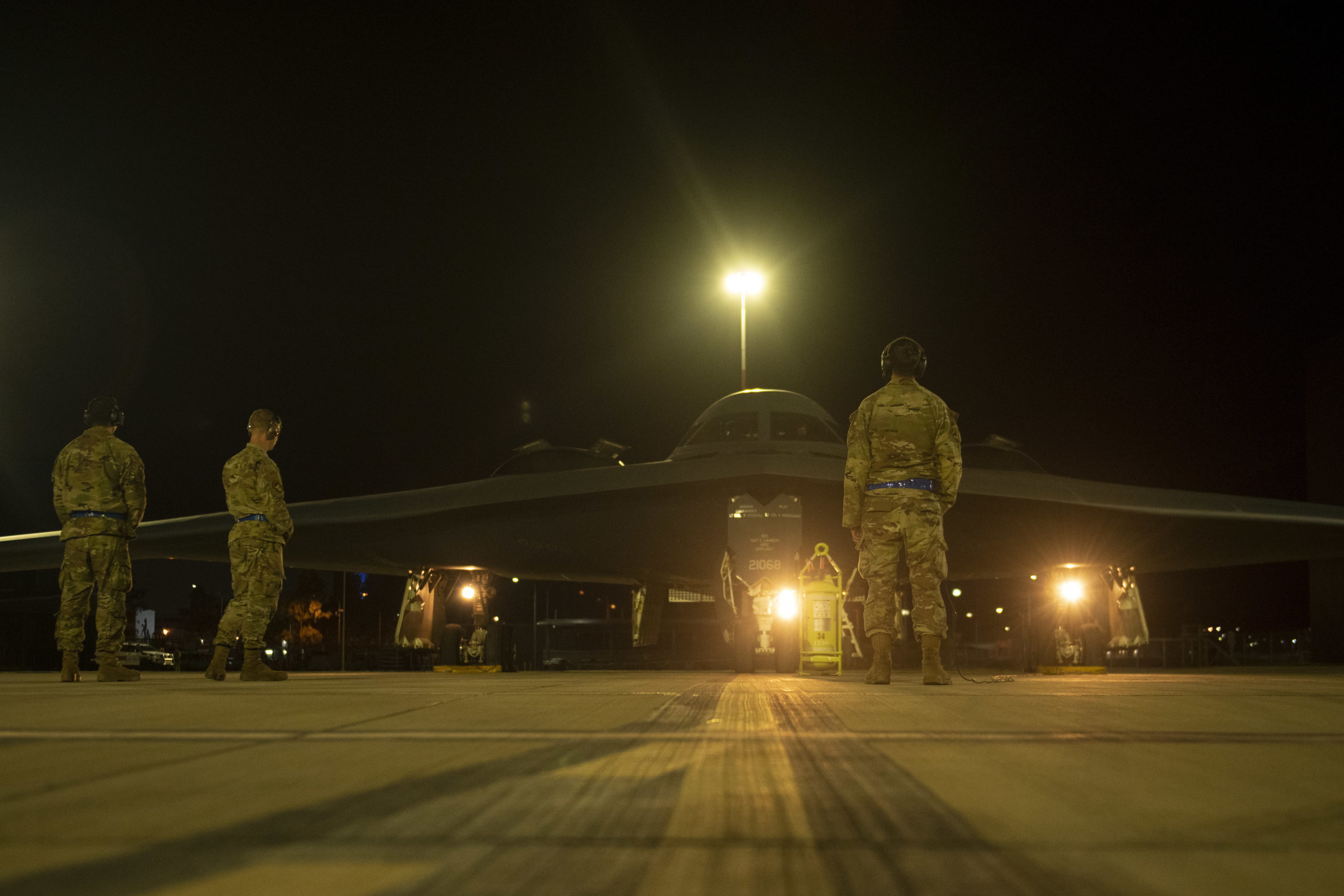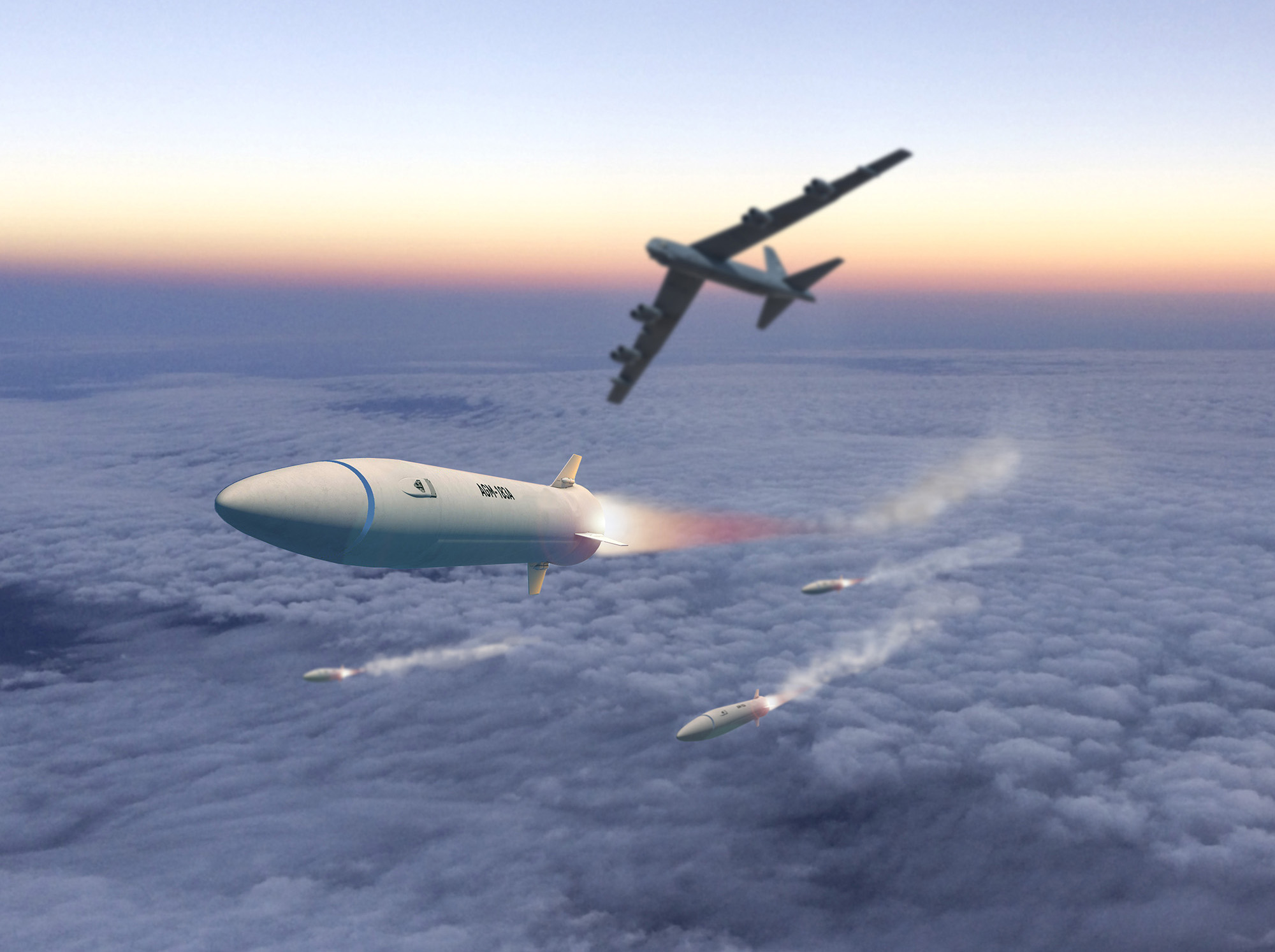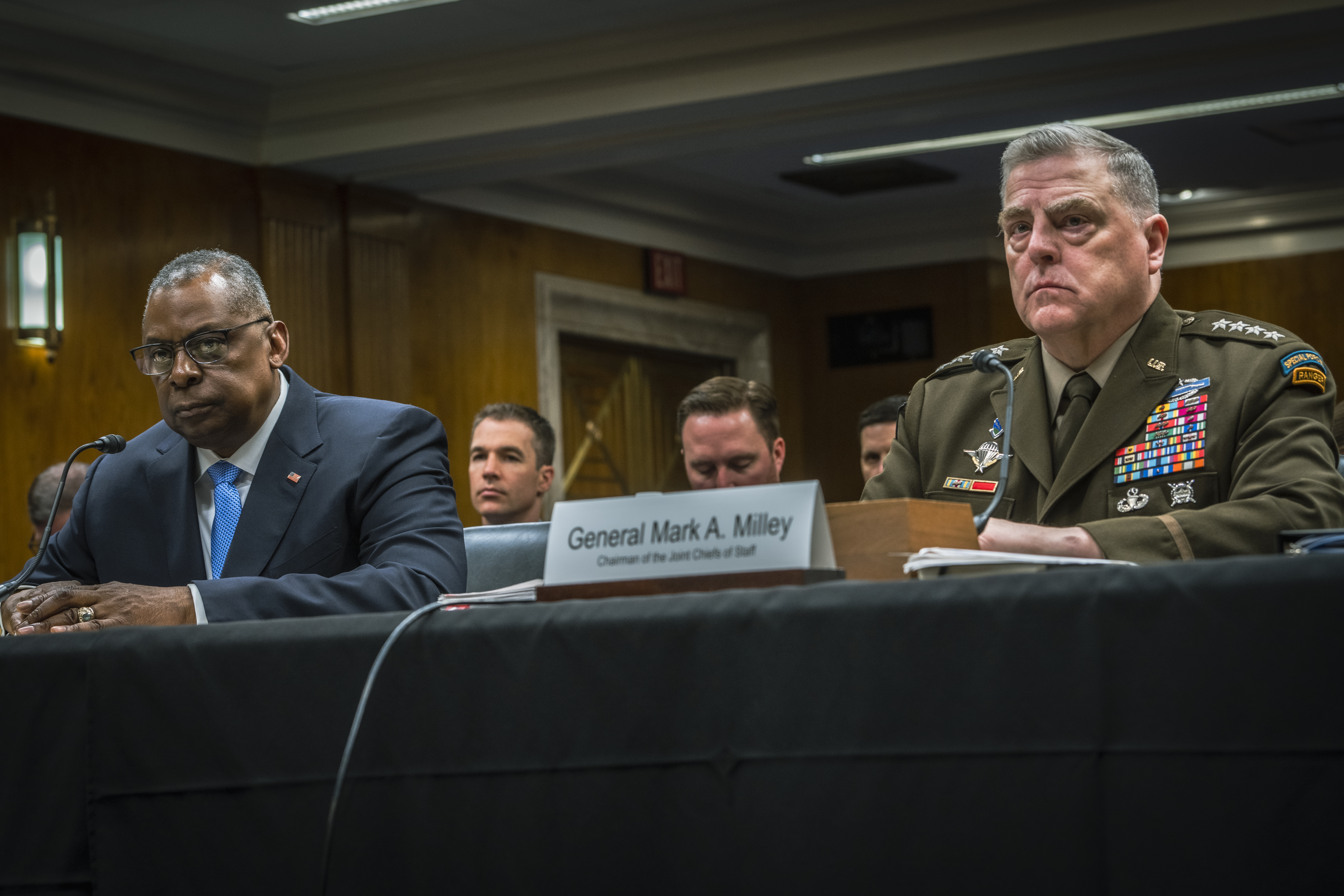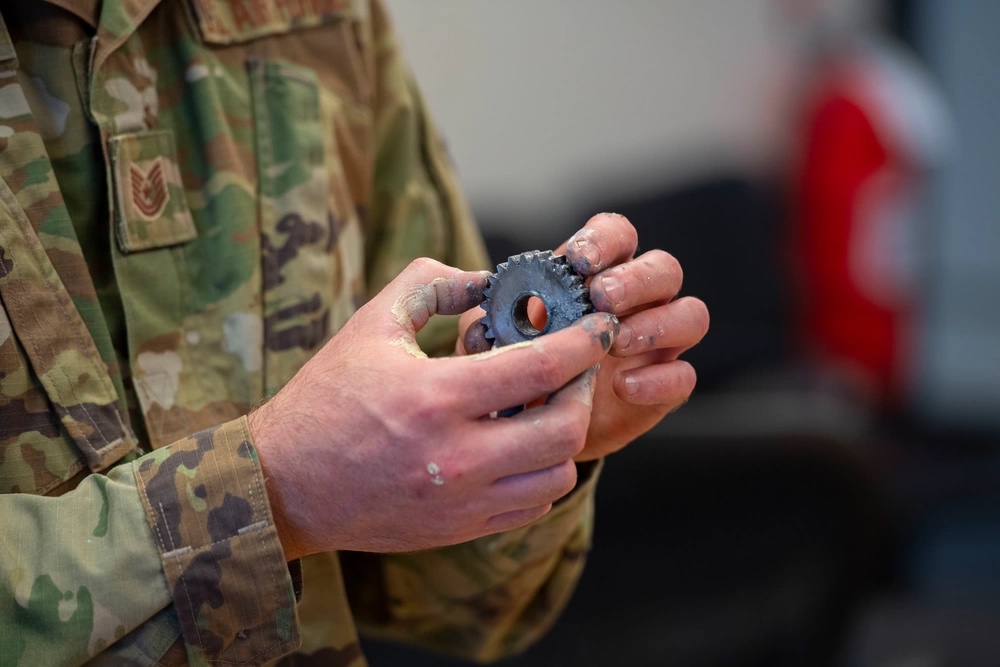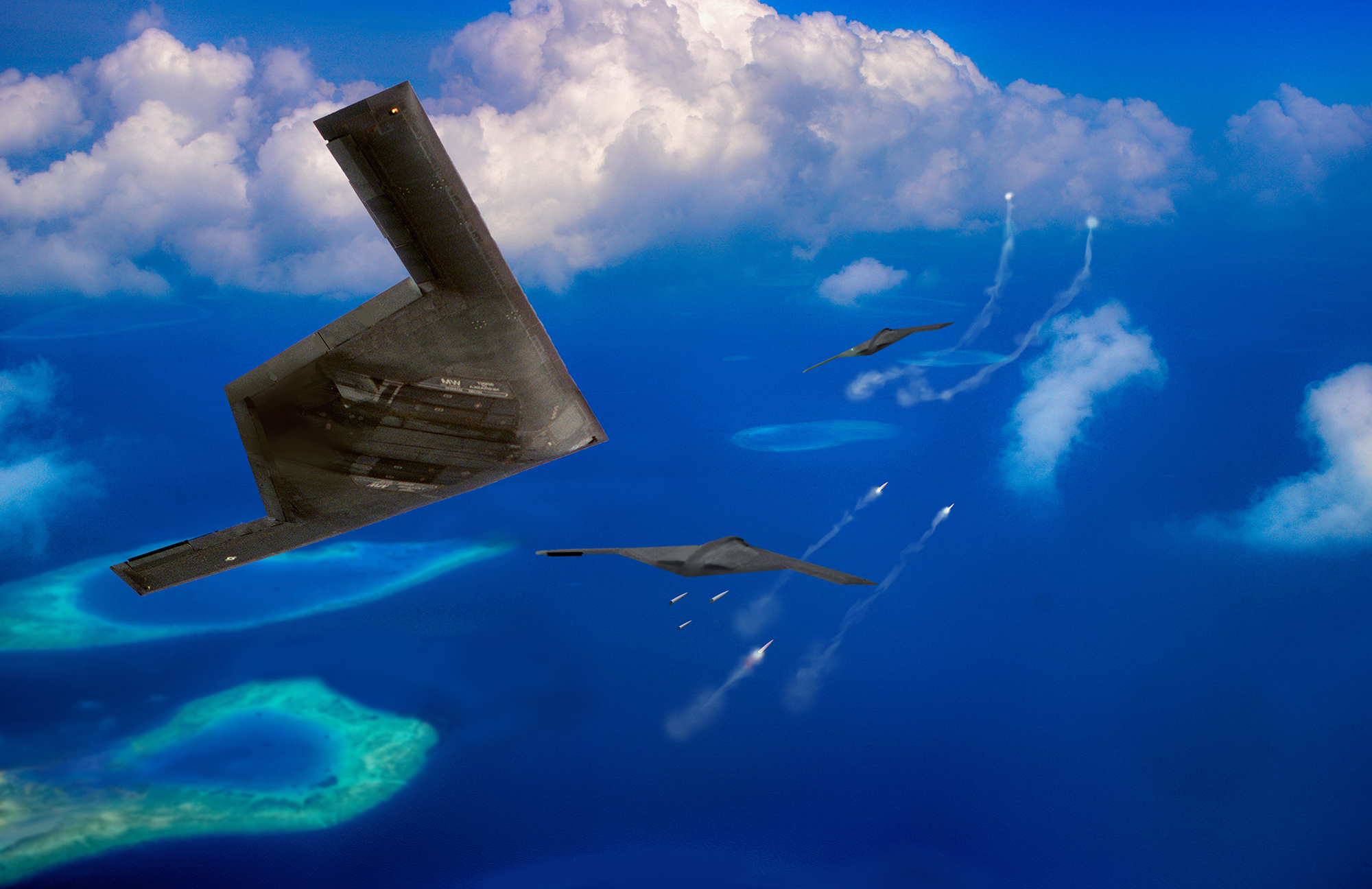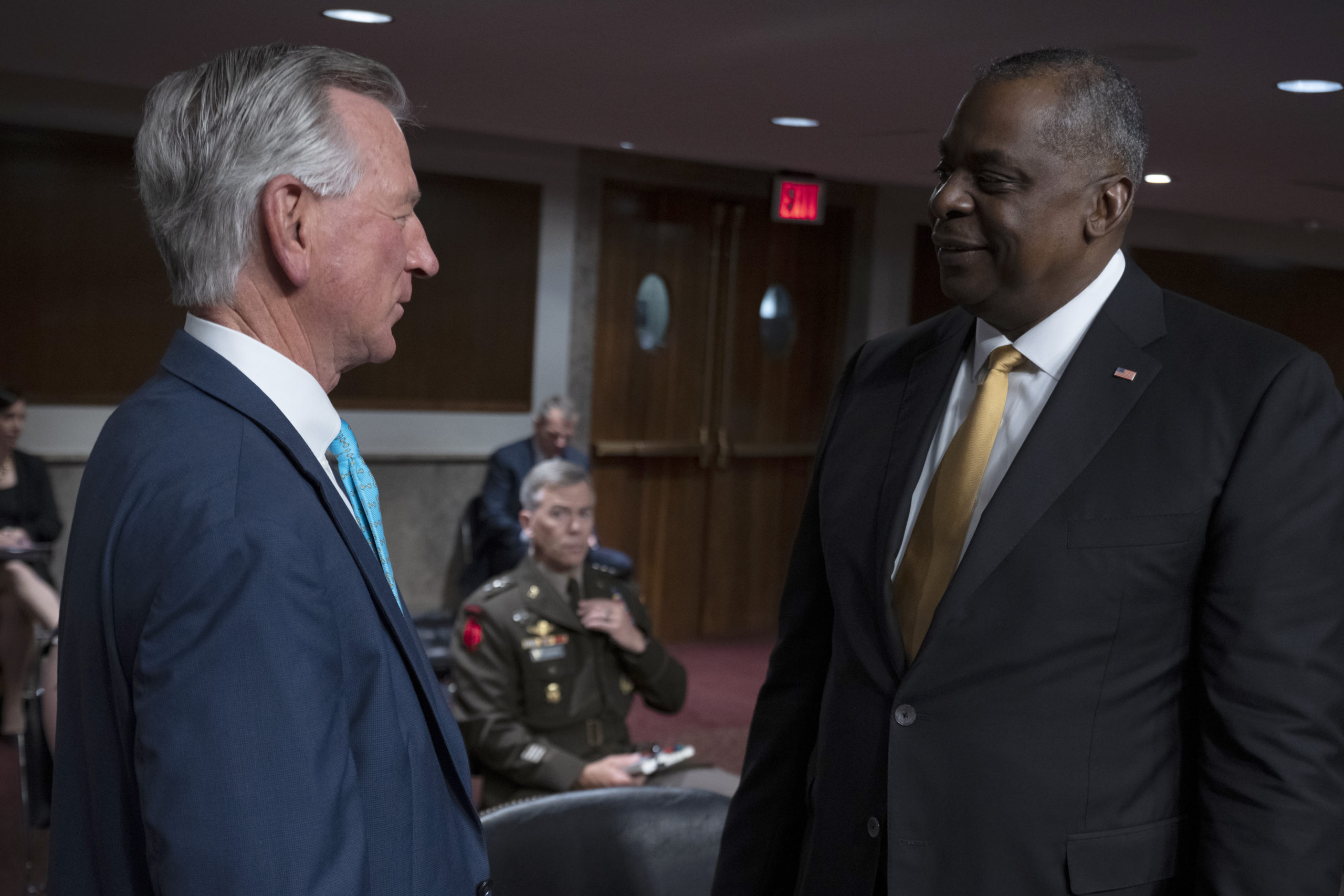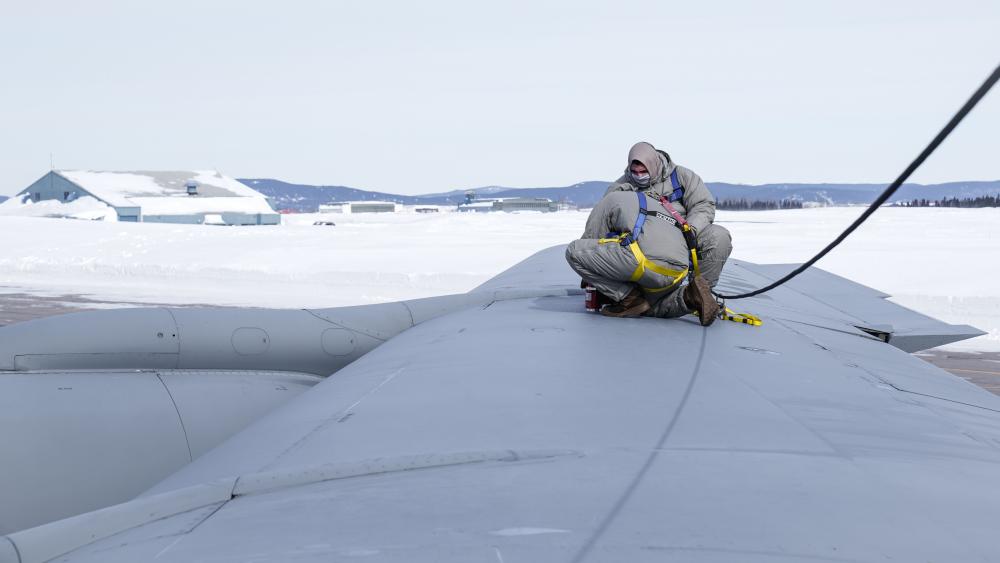Air Force leaders in charge of the nation’s B-2 Spirit stealth bomber fleet say they have been working behind the scenes to keep the aircraft ready—even as a “safety pause” on flying approaches six months in length.
A quarter-century after its introduction, the B-2 program is still shrouded in secrecy. But officials shed light on the steps they are taking to keep the aircraft, aircrews, maintainers, and weapons personnel up to speed as the service works to fix the problem that has led to a suspension of flight operations.
“We are ensuring that we are getting after readiness and that when the fleet safety pause is over, that we’re able to bring this bird back in the air in a manner commensurate with what the American public would expect from us,” Col. Daniel Diehl, 509th Bomb Wing commander at Whiteman Air Force Base, Mo., told Air & Space Forces Magazine.
The pause began in December on the order of Gen. Thomas A. Bussiere, the commander of Air Force Global Strike Command, after a B-2 was damaged after an emergency landing at Whiteman—the only base to host combat B-2s, which are assigned to the 509th Bomb Wing and its Air National Guard associate, the 131st Bomb Wing.
That incident, which temporarily shut down the lone runway at the base, was the second B-2 mishap in a little over a year.
In September 2021, a B-2 at Whiteman had a runway excursion after a part in its landing gear failed. The aircraft was sent for repairs to Northrop Grumman’s Plant 42 in Palmdale, Calif., where it was manufactured. Air Force officials have not publicly disclosed what caused the most recent incident or the extent of the damage to the B-2.
The pause in flight operations left one B-2 parked at Joint Base Pearl Harbor-Hickam, Hawaii, which shares runways with Daniel K. Inouye International Airport in Honolulu. An AFGSC spokesman said the remaining 19 B-2s are currently at Whiteman, one of which is a test aircraft normally based at Edwards Air Force Base, Calif.
Leaders say the aircraft are still flyable should the bomber be called upon to meet an urgent need. And the B-2’s main mission is an existential one: nuclear deterrence. But Bussiere’s goal is to find out what caused the incident with one of the military’s priciest platforms and ensure it does not happen again. Bussiere, a B-2 pilot and a former 509th Bomb Wing commander, took over AFGSC just days before the December mishap.
In the meantime, the Air Force is getting after readiness while aircrews are working to maintain their proficiency.
With aircraft not flying, the ground crew has had more time to spend with the airframe and perform checks, including of their low-observable stealth coating. Some B-2s have already had parts replaced as a result of the checks that are not directly related to the reasons for the safety pause.
“All military aircraft have a list of discrepancies—maintenance items that we typically don’t have the capacity to take care of,” said Col. Bruce T. Guest, commander of the 509th Maintenance Group. ”The B-2 is no exception, and so we’ve been able to deliberately address and whittle down our list of discrepancies. It’s no small feat that improves things like reliability.”
B-2 aircrews, for their part, have been flying in T-38 trainers and spending more time in simulators. Even before the pause, pilots kept up their flying chops in T-38 trainers and used simulators. But the number of repetitions on both have increased.
“We’re fortunate here at Whiteman to have very realistic simulators, which allow us to replicate the flight environment very well,” said Col. Geoffrey M. Steeves, commander of the 509th Operations Group.
“We’ve got a synthetic environment that we’re able to train in, and that allows us to actually put an air refueling tanker in front of a B-2 and go do our air refueling in a very realistic setting,” Steeves added. “These simulators are all wired together across the country, so it’s not uncommon for us to be able to be working with a synthetic AWACS, for example, or synthetic fighters that are elsewhere.”
Simulated B-2 missions have extended to some of the Air Force’s most important exercises such as Red Flag, used for combat training, and the U.S. Strategic Command’s annual Global Thunder nuclear readiness exercise.
“Even though we didn’t see airplanes flying at the end of that you normally would see, we still participated fully in that exercise—everything every other base was accomplishing,” Diehl said of Global Thunder. He added that Whiteman was involved in other exercises.
Since the first B-2 was unveiled in 1988, 21 aircraft have been produced. One was destroyed in a crash at Andersen Air Force Base, Guam in 2008, and the service has gone to great lengths to repair previously damaged B-2s. It is unclear what will happen to the B-2 damaged in December.
With only 20 B-2s in the fleet and a smaller number available to fly at a given time, the operational tempo of the fleet was demanding. Now officials say they have more time to attend to maintenance and readiness issues. But they still would like to get back in the air.
“Readiness for us is really twofold: the ability of the pilots to conduct the mission and the ability of the airplane to conduct the mission,” Diehl said. “It’s not that the pilots have been sitting on their hands.”
Eventually, the B-2 fleet will return to skies, officials said—conducting all of its missions from flyovers of the Rose Bowl to nuclear deterrence. But Diehl acknowledged the pause, even if it will ultimately lead to a safer fleet, was not a risk-free endeavor.
“There’s a subjective piece,” Diehl said. “I would argue we are just as ready, if not more ready than normal, to conduct the nation’s business. But there’s still risk associated with returning to fly. I think you would be surprised if I said there was no risk with putting pilots back in an airplane that they haven’t flown for five months.”
